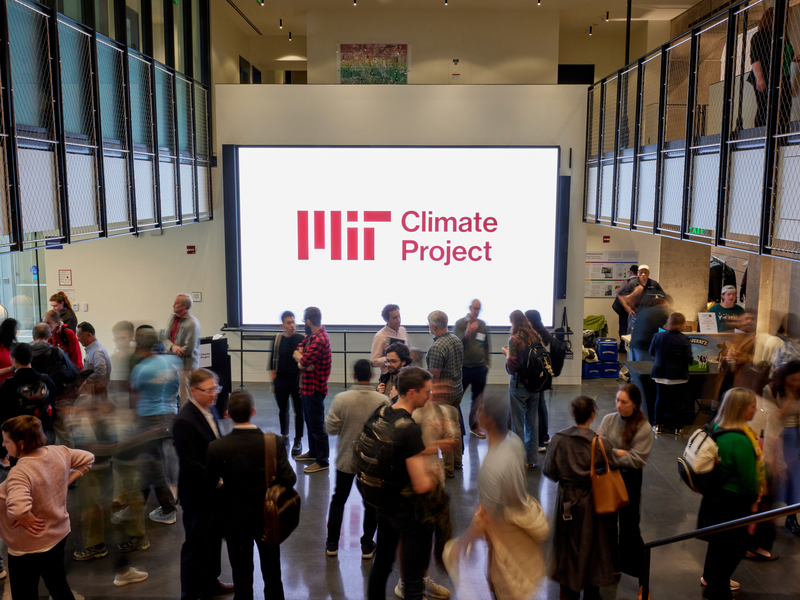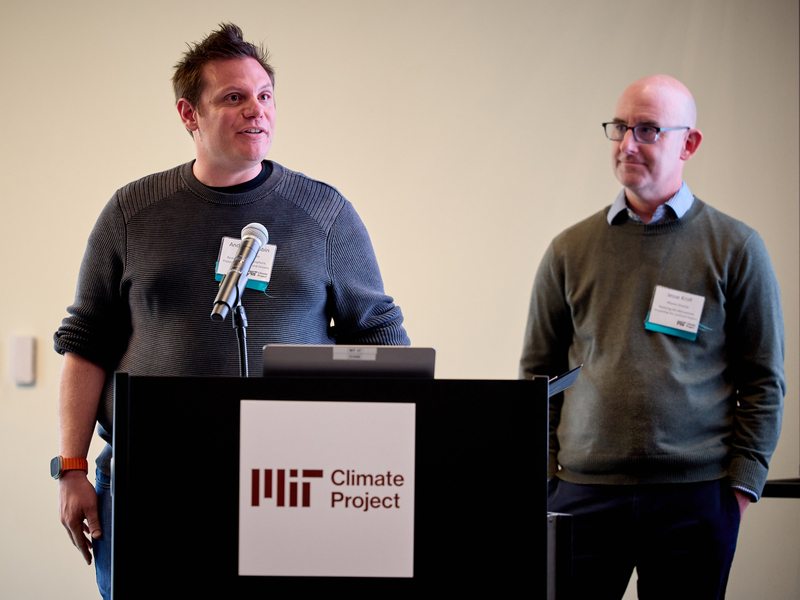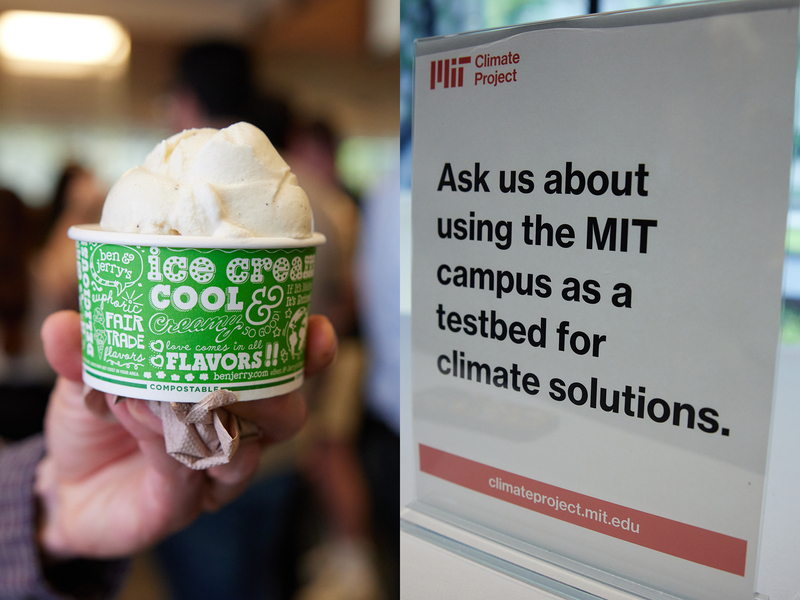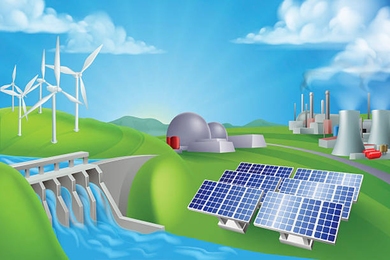MIT has an unparalleled history of bringing together interdisciplinary teams to solve pressing problems — think of the development of radar during World War II, or leading the international coalition that cracked the code of the human genome — but the challenge of climate change could demand a scale of collaboration unlike any that’s come before at MIT.
“Solving climate change is not just about new technologies or better models. It’s about forging new partnerships across campus and beyond — between scientists and economists, between architects and data scientists, between policymakers and physicists, between anthropologists and engineers, and more,” MIT Vice President for Energy and Climate Evelyn Wang told an energetic crowd of faculty, students, and staff on May 6. “Each of us holds a piece of the solution — but only together can we see the whole.”
Undeterred by heavy rain, approximately 300 campus community members filled the atrium in the Tina and Hamid Moghadam Building (Building 55) for a spring gathering hosted by Wang and the Climate Project at MIT. The initiative seeks to direct the full strength of MIT to address climate change, which Wang described as one of the defining challenges of this moment in history — and one of its greatest opportunities.
“It calls on us to rethink how we power our world, how we build, how we live — and how we work together,” Wang said. “And there is no better place than MIT to lead this kind of bold, integrated effort. Our culture of curiosity, rigor, and relentless experimentation makes us uniquely suited to cross boundaries — to break down silos and build something new.”
The Climate Project is organized around six missions, thematic areas in which MIT aims to make significant impact, ranging from decarbonizing industry to new policy approaches to designing resilient cities. The faculty leaders of these missions posed challenges to the crowd before circulating among the crowd to share their perspectives and to discuss community questions and ideas.
Wang and the Climate Project team were joined by a number of research groups, startups, and MIT offices conducting relevant work today on issues related to energy and climate. For example, the MIT Office of Sustainability showcased efforts to use the MIT campus as a living laboratory; MIT spinouts such as Forma Systems, which is developing high-performance, low-carbon building systems, and Addis Energy, which envisions using the earth as a reactor to produce clean ammonia, presented their technologies; and visitors learned about current projects in MIT labs, including DebunkBot, an artificial intelligence-powered chatbot that can persuade people to shift their attitudes about conspiracies, developed by David Rand, the Erwin H. Schell Professor at the MIT Sloan School of Management.
Benedetto Marelli, an associate professor in the Department of Civil and Environmental Engineering who leads the Wild Cards Mission, said the energy and enthusiasm that filled the room was inspiring — but that the individual conversations were equally valuable.
“I was especially pleased to see so many students come out. I also spoke with other faculty, talked to staff from across the Institute, and met representatives of external companies interested in collaborating with MIT,” Marelli said. “You could see connections being made all around the room, which is exactly what we need as we build momentum for the Climate Project.”















